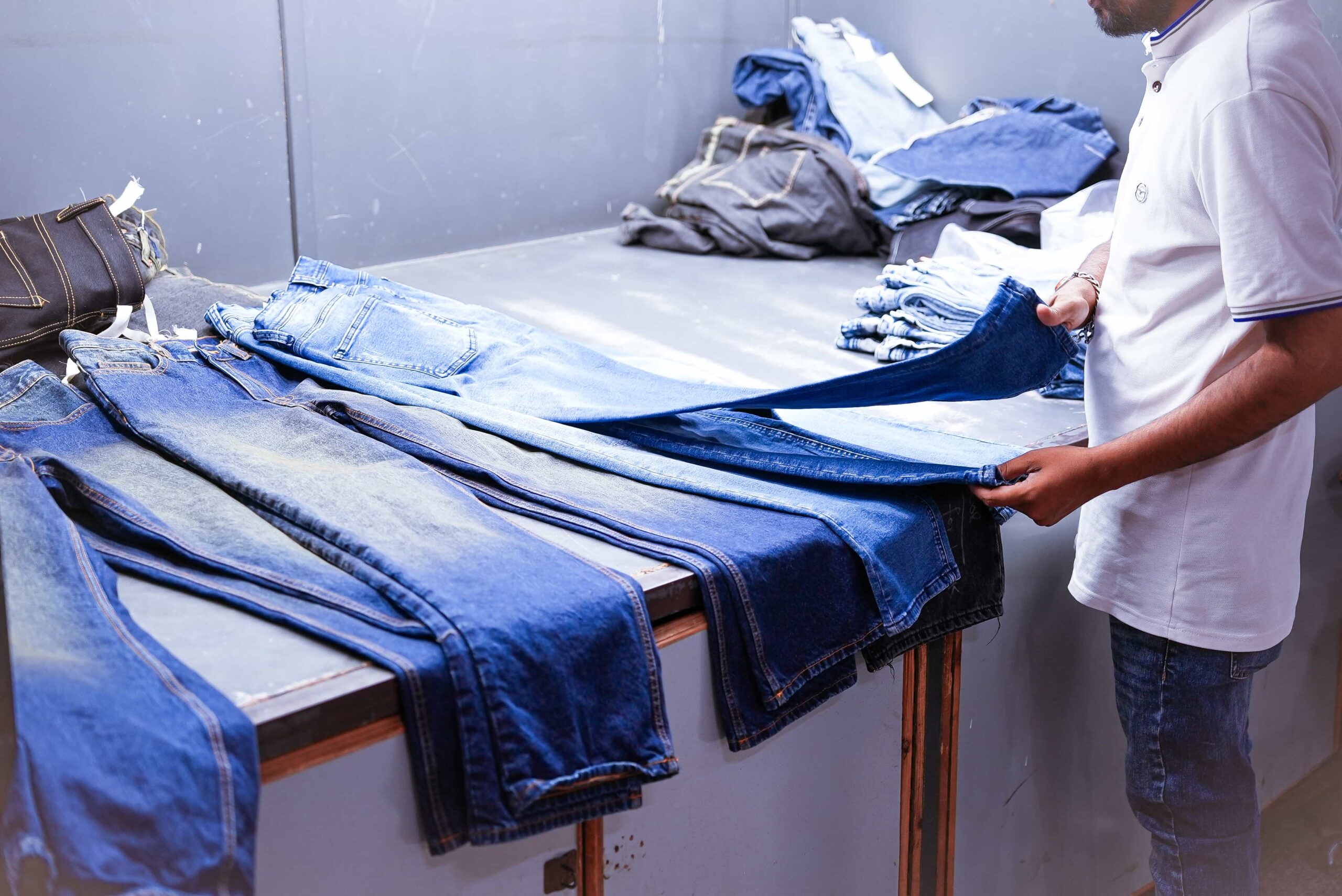
Quality Control Mechanism.
Quality control is an important phase in the garment manufacturing process since it entails checking and testing the finished product to ensure that it satisfies the specified quality and performance criteria. Following are the general steps in the quality control process:

- Fabric Inspection: Prior to cutting the fabric, it is critical to inspect it for any imperfections or flaws that may damage the quality of the finished product. This is usually accomplished by laying the cloth out on a cutting table and inspecting it for any abnormalities or inconsistencies.
- In-Process Inspection: Throughout the manufacturing process, it is critical to inspect the jeans at various stages to ensure they meet the required quality requirements. This could include reviewing the fabric components before and after sewing, as well as checking the fit and appearance of the finished product.
- Testing: In addition to visual inspection, the jeans may undergo a variety of tests to ensure that they satisfy the needed quality and performance criteria. This may involve colorfastness, shrinkage, and wear resistance tests, as well as conformity with industry norms and laws.
- Sorting and Disposition: If any defects or issues are discovered during the quality control process, the jeans can be classified and disposed of appropriately. This could entail revising or fixing the jeans, or disposing of them if they cannot be salvaged.

